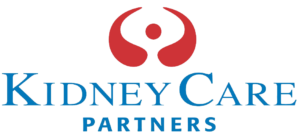Kidney Care Partners Reacts to Recently Released Prospective Payment System (PPS) Rule
July 7, 2020
WASHINGTON, DC – Kidney Care Partners (KCP) – the nation’s leading kidney care multi-stakeholder coalition representing patient advocates, physician organizations, health professional groups, dialysis providers, researchers, and manufacturers – today shared the following in reaction to the recently released Prospective Payment System (PPS) Rule:
KCP remains supportive of the Transitional Drug Add-on Payment Adjustment (TDAPA) for drugs that are defined as “functional category” drugs within the ESRD PPS, as well as products that are not part of the current categories. We also maintain our support for the Temporary Payment Add-on Adjustment for New and Innovative Equipment and Supplies (TPNIES). As the Administration has recognized, fostering innovation is critically important to providing access to new therapy options for patients with kidney failure who require dialysis. We look forward to working with CMS to ensure that once the TDAPA period ends, there is a sustainable pathway to support permanent adoption of new products when the incremental cost of providing the drugs to patients exceeds the relevant functional category products already in the bundle. We will review closely the proposed modifications to TPNIES.
KCP also supports CMS’ decision to add new dollars to the ESRD PPS for calcimimetics, which will be added to the ESRD PPS bundle in 2021. While we will review the analytics underpinning the payment amount proposed, we believe the policy, which recognizes the need to adjust the bundle to provide adequate reimbursement, is the appropriate step forward. It is important that the PPS rate be appropriately balanced to support innovation.
KCP is disappointed, however, that CMS has not proposed changes to the adjusters currently used in the ESRD PPS bundle. Both The Moran Company and MedPAC have demonstrated why the underlying methodology used to create the current adjusters gets them wrong and leads to money being taken away from patient care.
###
